It's now sol 77 at Curiosity's site and I see there has been another dig as well as another sample for the observation tray processed by CHIMRA! This past week has been all about dirt although Curiosity does deal with other measurements while doing all these things that we talk about here on the blog; monitoring the environment, remote sensing et cetera. All that demands wise scheduling to avoid becoming power deficient (while Curiosity uses nuclear power, it's not a direct supply as the battery has to be topped up before the rover has access to the power) and to edit out science activities (a delicate matter for the surface operations manager)!
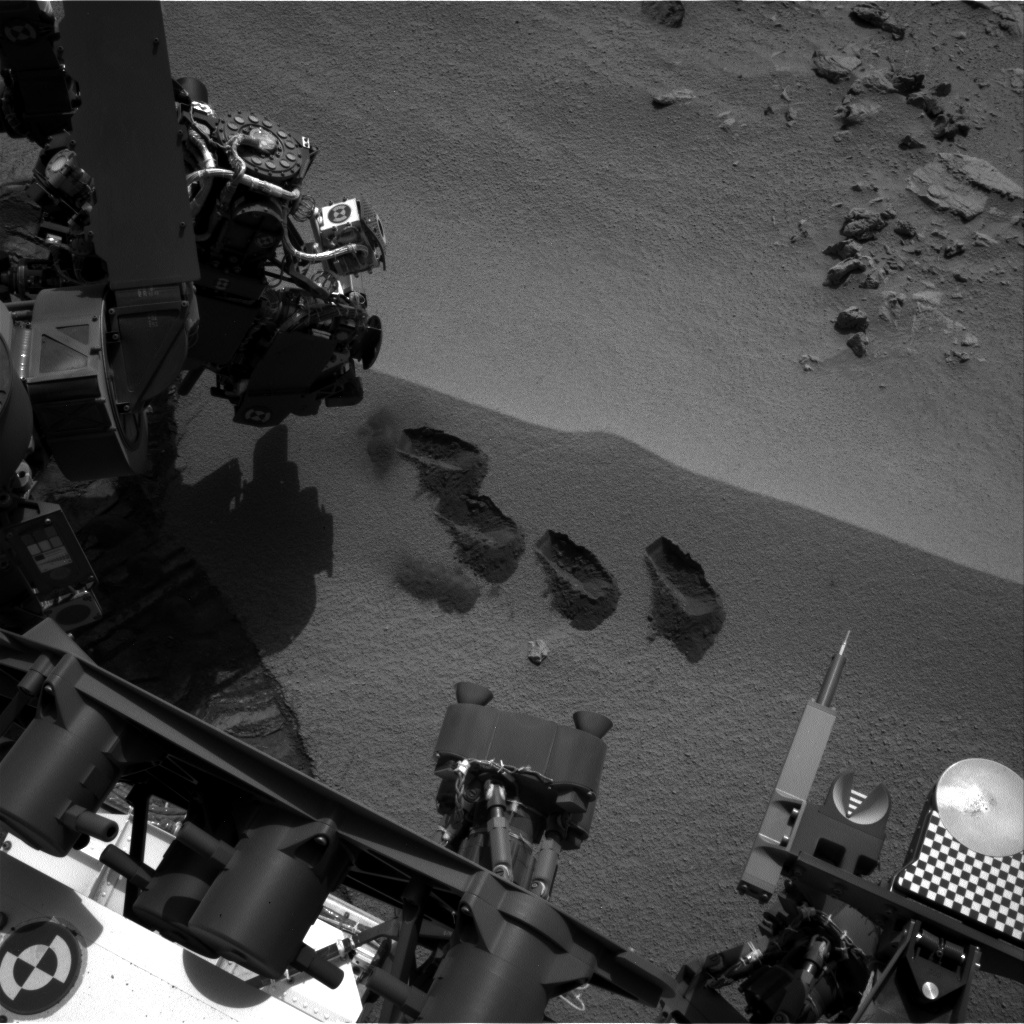 |
Kind of reminds you of a kid playing with a toy shovel!
Sol 74 navigation image (NASA/JPL) |
Anyway, what interested me before this fourth dig took place were the fascinating images of the observation tray holding the sample from the third dig taken by MAHLI.
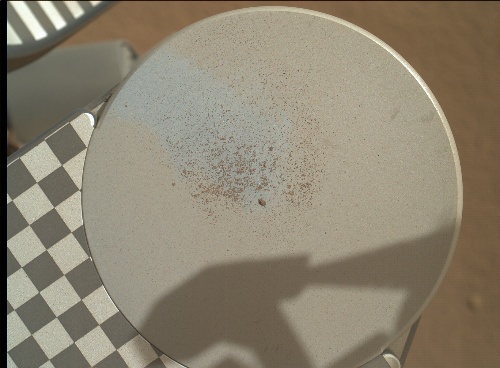 |
| MAHLI view of the tray, sol 73 (NASA/JPL/MSSS) |
Here is another image of the tray viewed up close by MAHLI.
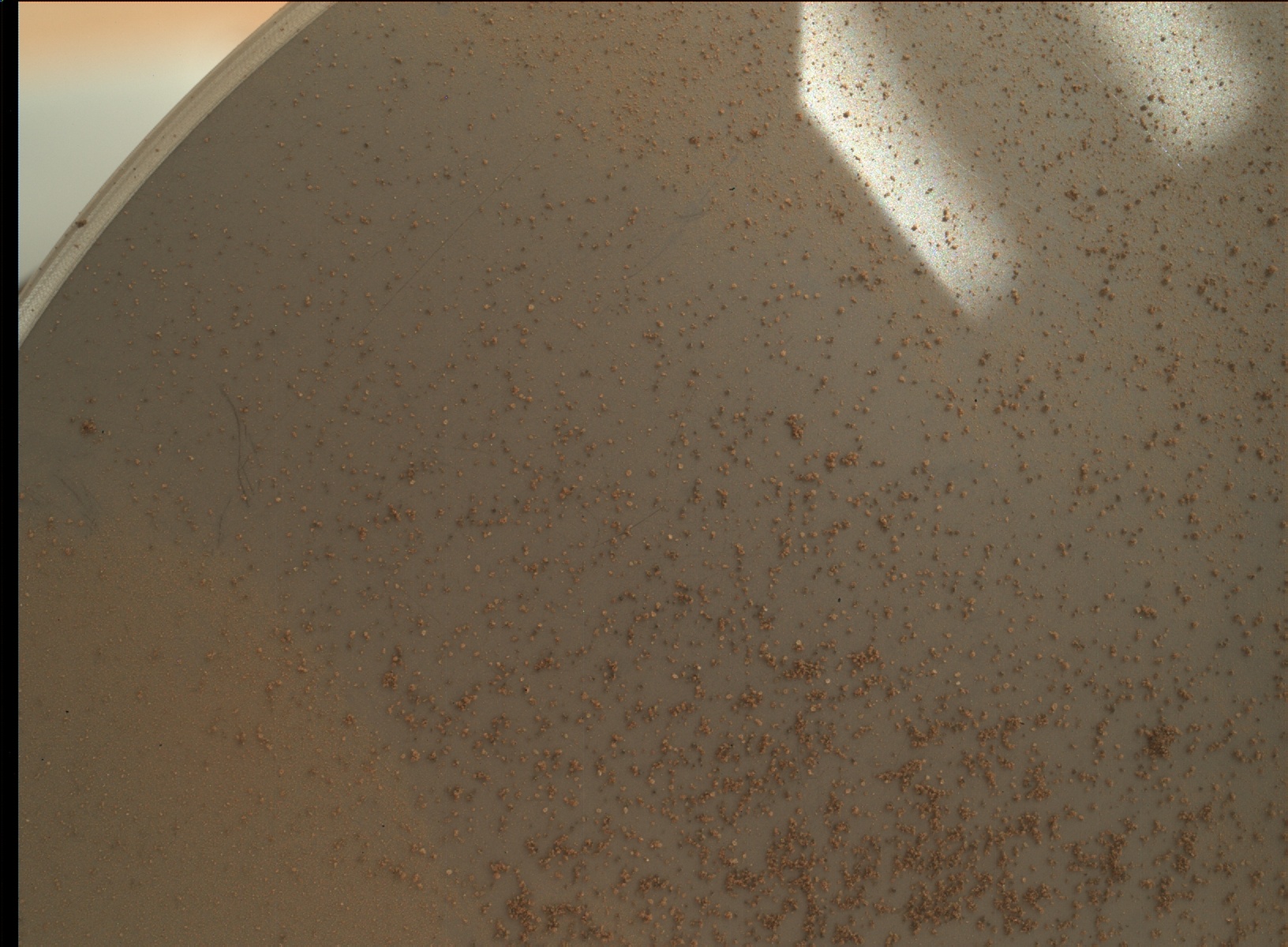 |
| Observation tray by MAHLI (NASA/JPL/MSSS) |
You can see here that there are at least 3 kinds of particles in the image above. The biggest are the white ones and then there are the slightly smaller, grey or black coloured ones and finally the ubiquitous fine Martian dust which prefers to stick in clumps rather than hang around alone. This means it is
cohesive. Notice also how asymmetric the sample in terms of the way the grains are arranged in relation to all other grains in addition to the size with finer grains located a little farther away than the rest of the rest of the (presumably heavier) grains. It could indicate the wind direction at the time
There was another image that was part of shown the recent
mission site report that showed the results of ChemCam's lazing of the sandy material on the drift with its powerful laser on sol 74.
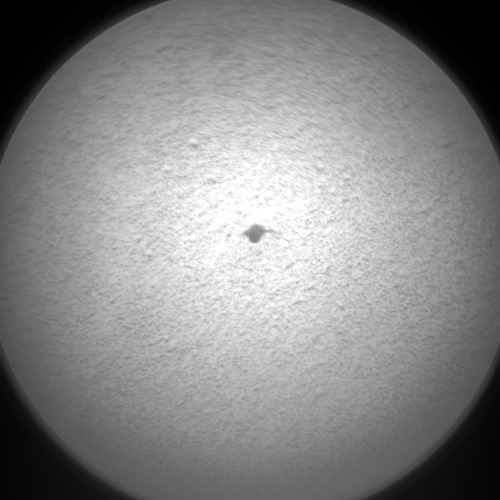 |
| ChemCam's zaps the target (NASA/JPL/LANL) |
Reading Ken Herkenhoff's incredible
insider blog, we get the reason why they did this particular drift:
In addition to the long-planned arm activities (4th scoop of soil), we added MAHLI images of the far side of the ripple we are scooping, Mastcam mosaics, and ChemCam LIBS observations of a nearby patch of soil during the day and just before dawn. The ChemCam observations are intended to see whether water frost forms on the surface during the night, by comparing the amount of hydrogen seen in the LIBS spectra when the soil is warm and cold.
Which would also help to explain why they were taking these images of drifts when the sun was low in the sky.
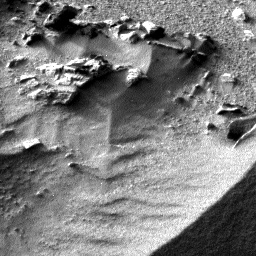 |
| Sol 74 navigation image (NASA/JPL) |
The dirt certainly holds many secrets. I don't about rest of you but pedology (the study of soils) rocks! Especially if it's out of this world!



No comments:
Post a Comment